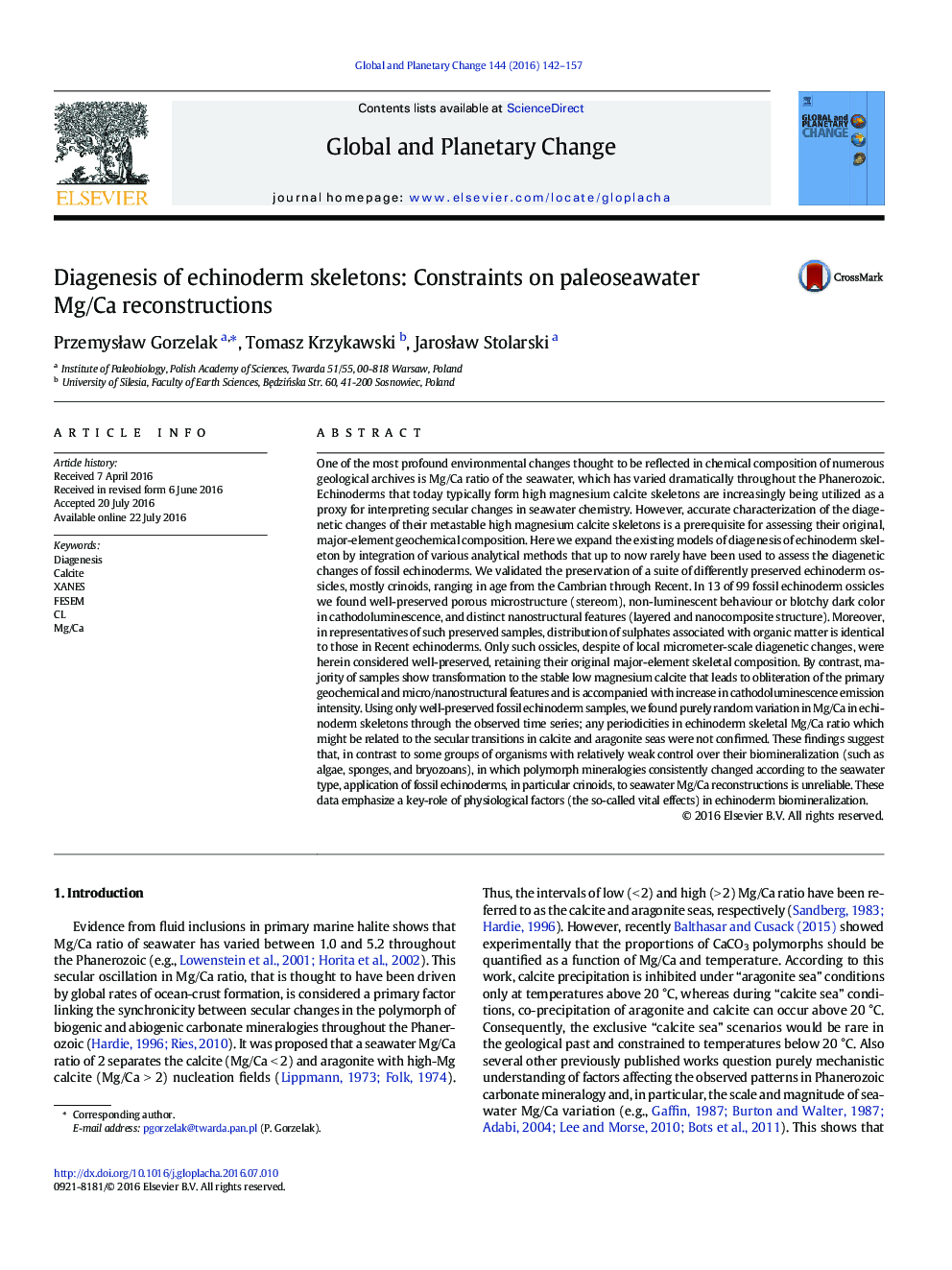| کد مقاله | کد نشریه | سال انتشار | مقاله انگلیسی | نسخه تمام متن |
|---|---|---|---|---|
| 4463276 | 1621638 | 2016 | 16 صفحه PDF | دانلود رایگان |
• Model of diagenesis of echinoderm skeleton is expanded.
• Purely random variation in Mg/Ca in well-preserved fossil echinoderm skeletons is observed.
• Application of fossil echinoderms to seawater Mg/Ca reconstructions is unreliable.
One of the most profound environmental changes thought to be reflected in chemical composition of numerous geological archives is Mg/Ca ratio of the seawater, which has varied dramatically throughout the Phanerozoic. Echinoderms that today typically form high magnesium calcite skeletons are increasingly being utilized as a proxy for interpreting secular changes in seawater chemistry. However, accurate characterization of the diagenetic changes of their metastable high magnesium calcite skeletons is a prerequisite for assessing their original, major-element geochemical composition. Here we expand the existing models of diagenesis of echinoderm skeleton by integration of various analytical methods that up to now rarely have been used to assess the diagenetic changes of fossil echinoderms. We validated the preservation of a suite of differently preserved echinoderm ossicles, mostly crinoids, ranging in age from the Cambrian through Recent. In 13 of 99 fossil echinoderm ossicles we found well-preserved porous microstructure (stereom), non-luminescent behaviour or blotchy dark color in cathodoluminescence, and distinct nanostructural features (layered and nanocomposite structure). Moreover, in representatives of such preserved samples, distribution of sulphates associated with organic matter is identical to those in Recent echinoderms. Only such ossicles, despite of local micrometer-scale diagenetic changes, were herein considered well-preserved, retaining their original major-element skeletal composition. By contrast, majority of samples show transformation to the stable low magnesium calcite that leads to obliteration of the primary geochemical and micro/nanostructural features and is accompanied with increase in cathodoluminescence emission intensity. Using only well-preserved fossil echinoderm samples, we found purely random variation in Mg/Ca in echinoderm skeletons through the observed time series; any periodicities in echinoderm skeletal Mg/Ca ratio which might be related to the secular transitions in calcite and aragonite seas were not confirmed. These findings suggest that, in contrast to some groups of organisms with relatively weak control over their biomineralization (such as algae, sponges, and bryozoans), in which polymorph mineralogies consistently changed according to the seawater type, application of fossil echinoderms, in particular crinoids, to seawater Mg/Ca reconstructions is unreliable. These data emphasize a key-role of physiological factors (the so-called vital effects) in echinoderm biomineralization.
Journal: Global and Planetary Change - Volume 144, September 2016, Pages 142–157
